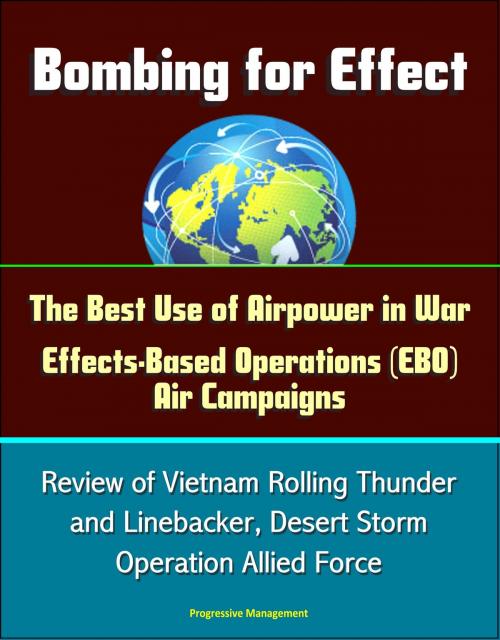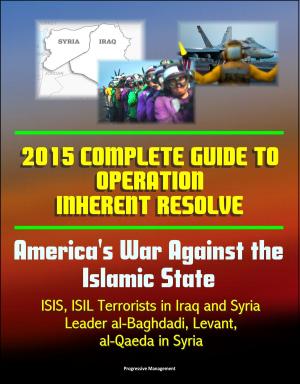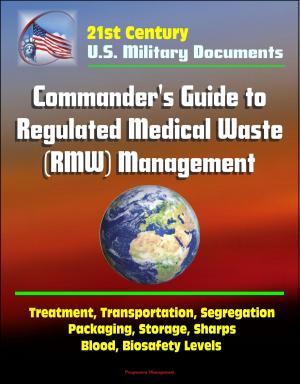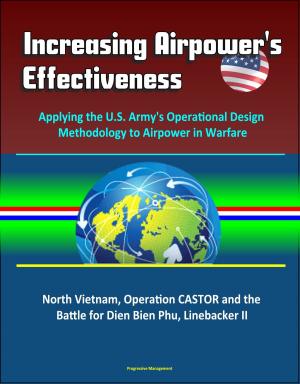Bombing for Effect: The Best Use of Airpower in War, Effects-Based Operations (EBO) Air Campaigns, Review of Vietnam Rolling Thunder and Linebacker, Desert Storm, Operation Allied Force
Nonfiction, History, Military, Vietnam War, Asian, Aviation| Author: | Progressive Management | ISBN: | 9781310571787 |
| Publisher: | Progressive Management | Publication: | June 16, 2014 |
| Imprint: | Smashwords Edition | Language: | English |
| Author: | Progressive Management |
| ISBN: | 9781310571787 |
| Publisher: | Progressive Management |
| Publication: | June 16, 2014 |
| Imprint: | Smashwords Edition |
| Language: | English |
Like many other new technologies, the use of airpower in war has gone through many changes as military leaders struggle to maximize its potential. Airpower assets have the unique capability to operate in all parts of an area of operations (AO) unrestricted by terrain and enemy fielded forces. This capability allows the military great flexibility in prosecuting targets to successfully achieve campaign objectives. However, airpower assets are a finite resource and great care must be taken to avoid minimizing the effects they can deliver.
Much has been written about effects-based operations (EBO) throughout history, and the concept seems fairly simple on the surface. The leadership sets the objectives, and the military applies force in such a manner as to achieve effects that will allow attainment of those objectives. Joint Vision 2020 recognized the importance of EBO by stating,
The concept of precision engagement extends beyond precisely striking a target with explosive ordnance. Information superiority will enhance the capability of the joint force commander to understand the situation, determine the effects desired, select a course of action and the forces to execute it, accurately assess the effects of that action, and reengage as necessary while minimizing collateral damage. During conflict, the commander will use precision engagement to obtain lethal and nonlethal effects in support of the objectives of the campaign.
CHAPTER 1 - INTRODUCTION * Background * Research Question * Subordinate Research Questions * Assumptions * Delimitations * CHAPTER 2 - LITERATURE REVIEW * Doctrine * Airpower Theory * Douhet and Mitchell * Pape * Boyd * Warden * Deptula * Vietnam Air Campaigns * Rolling Thunder * Linebacker I and II * Desert Storm Air Campaign * Operation Allied Force Air Campaign * CHAPTER 3 - RESEARCH METHODS * CHAPTER 4 - RESULTS AND ANALYSIS * What Is an Effects-Based Air Campaign? * Does the US Consciously Plan EBO? * Political Objectives Versus Military Objectives * Official Guidance * Planning for Desired Effects * COG Identification and Targeting for Effect * Enemy Adaptability * EBO Applied to All Levels of War * Previous US Successes and Failures * What Went Right? * What Went Wrong? * CHAPTER 5 - CONCLUSIONS AND RECOMMENDATIONS * Planning * Education * Future Study * Conclusion
Like many other new technologies, the use of airpower in war has gone through many changes as military leaders struggle to maximize its potential. Airpower assets have the unique capability to operate in all parts of an area of operations (AO) unrestricted by terrain and enemy fielded forces. This capability allows the military great flexibility in prosecuting targets to successfully achieve campaign objectives. However, airpower assets are a finite resource and great care must be taken to avoid minimizing the effects they can deliver.
Much has been written about effects-based operations (EBO) throughout history, and the concept seems fairly simple on the surface. The leadership sets the objectives, and the military applies force in such a manner as to achieve effects that will allow attainment of those objectives. Joint Vision 2020 recognized the importance of EBO by stating,
The concept of precision engagement extends beyond precisely striking a target with explosive ordnance. Information superiority will enhance the capability of the joint force commander to understand the situation, determine the effects desired, select a course of action and the forces to execute it, accurately assess the effects of that action, and reengage as necessary while minimizing collateral damage. During conflict, the commander will use precision engagement to obtain lethal and nonlethal effects in support of the objectives of the campaign.
CHAPTER 1 - INTRODUCTION * Background * Research Question * Subordinate Research Questions * Assumptions * Delimitations * CHAPTER 2 - LITERATURE REVIEW * Doctrine * Airpower Theory * Douhet and Mitchell * Pape * Boyd * Warden * Deptula * Vietnam Air Campaigns * Rolling Thunder * Linebacker I and II * Desert Storm Air Campaign * Operation Allied Force Air Campaign * CHAPTER 3 - RESEARCH METHODS * CHAPTER 4 - RESULTS AND ANALYSIS * What Is an Effects-Based Air Campaign? * Does the US Consciously Plan EBO? * Political Objectives Versus Military Objectives * Official Guidance * Planning for Desired Effects * COG Identification and Targeting for Effect * Enemy Adaptability * EBO Applied to All Levels of War * Previous US Successes and Failures * What Went Right? * What Went Wrong? * CHAPTER 5 - CONCLUSIONS AND RECOMMENDATIONS * Planning * Education * Future Study * Conclusion















